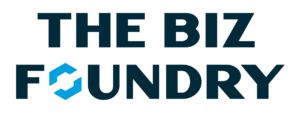Now that 2022 is over and a new year is ahead, it’s time to start getting your books in order. Financial tasks tend to make many entrepreneurs want to run and hide, we get it money stuff can be scary! So, let’s start with the basics – understanding the difference between bookkeeping vs budgeting and why you need both.
Bookkeeping 101
Bookkeeping looks back. It’s the practice of tracking what you’ve earned and spent.
It involves categorizing all of your transactions, so you know specifically where your money is coming from and going to. Think of it as a detailed checkbook register (though I’m not sure how many people actually remember those anymore).
It’s essential you keep clean books so you always have detailed information on the state of your business. This information allows you to set realistic goals and make effective decisions. Not only that, having accurate and precise books makes your accountant and the IRS happy come tax time.
Bookkeeping Software
While bookkeeping software isn’t necessary, it certainly will make your life easier.
You can definitely use Google Sheets, Excel, or pen and paper to keep track of all your income and expenses. Those options are free, but they are much more tedious and typically less effective at giving you easy to access information.
I highly recommend using bookkeeping software. I’m personally a huge fan of Quickbooks (though I’m old school and use the desktop version vs Quickbooks Online). Quickbooks Online starts at about $30 per month with their Simple Start level which is typically robust enough for most small businesses.
Please do not use the Self-Employed versions. Yes it’s cheap, but it doesn’t have the capabilities any small business owner needs.
There are other software options like Xero and Wave. I’ve heard good things about both, but have no personal experience with either platform.
If you aren’t already using bookkeeping software take a look at Quickbooks, Xero and Wave to compare features and costs. Also talk to your accountant and see if they have a preference or suggestions when it comes to software, so you are both on the same page.
Start Bookkeeping
To get started with bookkeeping for your business you have two options – hire a bookkeeper or do it yourself. And even if you decide to DIY it, you can hire a bookkeeper to get you set-up properly and trained.
Next, pick your system. If you’re going digital, select your software and link your bank accounts. If you are going analog, get your spreadsheets set-up.
Then, you’ll need to figure out your categories so you can put every transaction into a “bucket”. Most bookkeeping software helps with this, showing you standard categories related to tax deductions.
For example, with my sticker business all of the copy paper we buy to print packing slips goes into my Office Supplies category and our monthly internet bill goes into Utilities.
Once you’re all set-up, have your bank accounts linked and categories mapped out, you need a system to make sure you stay on top of everything. If you have a bookkeeper, request they provide you with monthly reports. If you are DIYing it, make sure you reconcile your books monthly and review your Profit and Loss statement.
Budgeting 101
Budgeting looks forward. It’s the practice of anticipating future income and planning for upcoming expenses. It involves making predictions based on solid data, not just pulling numbers out of your ____.
Having a good budget is equivalent to having Google Maps on your phone. Both tell you what’s ahead, so you can get to your destination and adjust as needed.
Budgeting Software
Just like with bookkeeping you don’t need software, but it will definitely make budgeting much easier.
Quickbooks has budgeting features that many business owners use. I personally use YNAB for both my personal and business budgets and it’s helped me tremendously.
Start Budgeting
Getting started with budgeting is a little trickier than bookkeeping because you need data.
If you’re a brand new business, you likely won’t have enough historical data to create a really solid budget. Simply spend your first year in business keeping really clean books so you can use that information to create a budget for the next year. And in the meantime you can at least budget for expected ongoing and long-term expenses (aka fixed bills).
If you’ve been in business for at least a year, it’s budget time! Take a look at your Profit and Loss statement from the previous year and use the amounts spent in each category to help you predict what you’ll likely spend this year. And be sure to consider things like business growth, so you can adjust your budget for certain categories accordingly.
Once you have your annual totals for each category, it’s a good practice to put money aside monthly to help build up the funds in each “bucket”.
For example, my sticker business spent $1500 last year on Office Supplies (no that wasn’t all copy paper LOL). I expect business to be slower this year, so I budgeted $1200 for that category for 2023. I’ll put $100 per month into that “bucket” to help create a funding source for those expenses. I use YNAB to do this and without it budgeting would be a pain for me!
Conclusion
To run a successful, thriving business you need to stay on top of your finances. This means keeping clean books and having a solid budget. Equipped with these tools and data you can set goals, pivot when needed and make effective decisions. Aim to be that business owner that knows your profit margin, what expenses you need to reduce and when you have the funds to hire that graphic designer to give you a top notch rebrand!
Help me!
Okay still feeling like you want to run and hide? We’re here to help! Whether you need referrals to accountants and bookkeepers or simply have questions, book a free meeting with one of our business advisors to start mastering your business finances.
Disclaimer: This page contains YNAB affiliate links. If you choose to make a purchase after clicking a link, I (Jess) may receive a commission at no additional cost to you. Thank you for your support!



One Response
Great info. Thanks